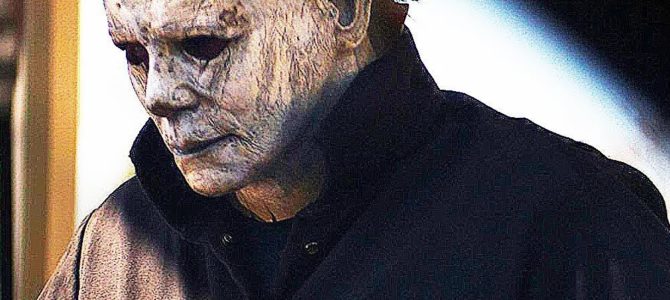Warning: This post contains major spoilers.
The 11th installment of Universal’s “Halloween” franchise debuted this weekend to impressive fanfare, bringing in $77.5 million in North America with the second-largest opening for a horror film ever, second only to “It,” which grossed $123 million in its opening weekend last year.
Jamie Lee Curtis returned to the franchise to reprise her role as Laurie Strode, the young, but fearless lead of the original “Halloween” released in 1978. The success of this latest installment speaks not only to America’s attraction to horror flicks, but also to America’s appreciation for the Second Amendment, and more particularly to the essential relationship between women and the right to self-defense.
In the original “Halloween,” directed by John Carpenter, serial killer Michael Myers terrorizes an Illinois town, preying upon teenage babysitters and leading them to their gruesome deaths. In a climactic showdown, 17-year-old Strode escapes from the deranged Myers, but the brutality of the events becomes her albatross.
The decades-long aftershock serves as the framework for the 2018 sequel. The film depicts Strode 40 years later: disillusioned, guarded, and traumatized by her near-death experience at Myer’s hands. Strode’s current home, a secluded fortress of escape rooms and mechanized doors, stands as a grim reflection of the ordeal’s lasting impact on her and of her stubborn — and, as we learn, well-founded — fear of Myer’s possible return.
Inside her home, Strode harbors what could only be referred to as a small arsenal of weapons. Strode’s relatively expansive gun collection, hidden in the cellar of her quasi-safehouse, is depicted not only as a matter of self-defense but also as a matter of pride. Indeed, Strode is unapologetic when she first showcases her guns to her son-in-law, his face assuming a look of twisted confusion as she details to him her assortment of weapons.
Strode’s host of weapons crop up throughout the script. Strode trains for Myer’s return with what appears to be a lever-action rifle. Upon Myer’s return, she uses a pump-action shotgun to safeguard herself and her family. Earlier on, she brandishes a silver revolver in an effort to encourage her daughter Karen to arm herself.
Strode’s daughter is no stranger to her mother’s weapon collection. Audiences learn that Strode’s fear of Myer’s return profoundly shaped Karen’s childhood. Strode’s paranoia resulted not only in Karen learning to shoot a shotgun at a young age but also in eventually being taken away from her mother due to her presumed insanity. The cathartic irony of the film is that Karen’s marksmanship ultimately comes into play.
The portrayal of guns in “Halloween” reinforces their important, but sometimes less appreciated role as the “great equalizer” between men and women. With her arsenal of weapons, Strode and her daughter are far less likely to be at the mercy of their bitter assailant, but instead are empowered and fearless in the face of a mass-murderer. Indeed, after Myers killed several local cops, Strode and Karen are entirely without recourse, save their own weapons.
The ending offered in “Halloween,” where the “good guys” win due to a stellar shot by Karen, is a product of the Second Amendment. Indeed, the very destruction of Myers at the hands of Strode and her daughter could happen only in a place where the right to self-defense is so readily protected. In other words, this “happy ending” is feasible only in America.
“Halloween” delivers not only an entertaining horror film but also a stiff dose of individual liberty. Whether the celebration was intentional or not is irrelevant. The mere production of such a portrayal constitutes reverence enough.









